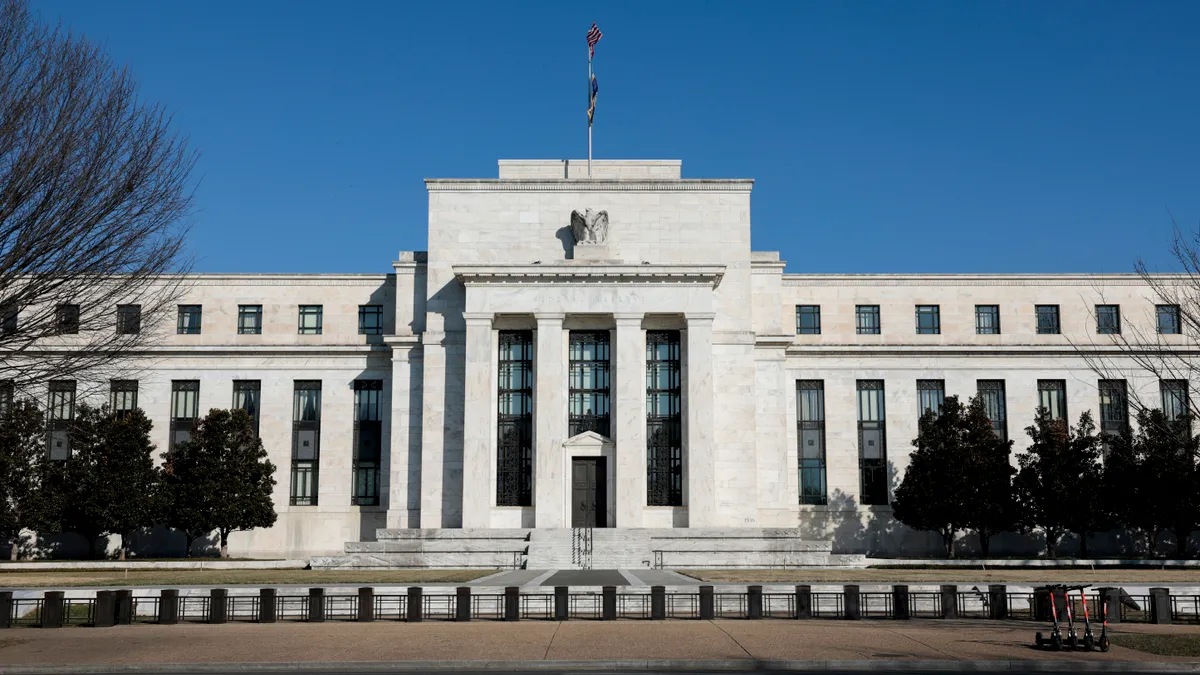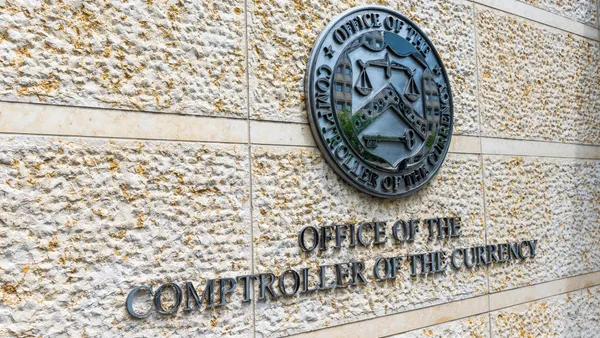Dive Brief:
- The Federal Reserve on Thursday outlined its 2024 stress test scenarios that will be used to scrutinize the largest banks in the U.S. under severe market volatility.
- Banks with more than $100 million of assets will face scenarios in which the U.S. unemployment rate rises by 10%, house prices decline by 36% and commercial real estate prices plunge by 40%.
- Results of the tests are expected to be released in June, the Fed said.
Dive Insight:
The exams aim to reveal how much capital banks need to be healthy and will include 32 banks – compared to 23 last year – using scenarios that extend two years into the future.
Banks with large trading operations will also be tested against a global market shock component that primarily stresses their trading and related positions. That component is a set of hypothetical stresses to a set of risk factors indicating market distress and heightened uncertainty, the Fed said.
This year’s test is “generally consistent” with the scenarios the Fed has used in the past, according to a report by Piper Sandler analysts. The Fed’s severely adverse scenario includes a severe global recession, which spills over into the corporate sector and affects investor sentiment.
Compared to last year’s scenario, this year’s assumptions include a slightly smaller increase in the unemployment rate and a significantly higher starting level of interest rates – meaning that rates decline more significantly in this year’s scenario.
“This year also includes a slightly smaller decline in housing prices – CRE price decline is almost exactly what it was last year,” wrote Piper Sandler Managing Director Scott Siefers. “However, the decline in equity prices and increase in corporate bond spreads are both more severe.”
But Bert Ely of Ely & Company, an independent banking consultant in Alexandria, Virginia, told Banking Dive he has always been “highly skeptical” of the Fed’s stress-testing, in part because of major data lags.
He noted that the stress-test results are based on bank data from Sept. 30, 2023.
“Given how fast markets move, that’s ancient history in the financial world,” Ely said. “Of perhaps greater importance is how quickly regulators act on adverse trends revealed by stress-test results – the recent very costly bank failures were the consequence of bad banking practices, notably maturity mismatching, that did not require a stress test to identify.”
The Fed is also including elements of “exploratory analysis” this year, designed to probe different risks, though those factors will not affect capital requirements.
That testing component includes four separate hypothetical elements that will assess the resilience of the system to a wider range of risks. Two of the hypothetical elements include funding stresses that cause a rapid repricing of a large proportion of deposits.
The other two elements include market shocks that will be applied to the largest and most complex banks. Those shocks hypothesize the failure of five large hedge funds, with each under a different set of market conditions.
“The exploratory analysis is distinct from the stress test and will explore additional hypothetical risks to the broader banking system, rather than focusing on firm-specific results,” the Fed said.
The annual Fed testing regimen was first rolled out in response to the 2007-08 financial crisis.














